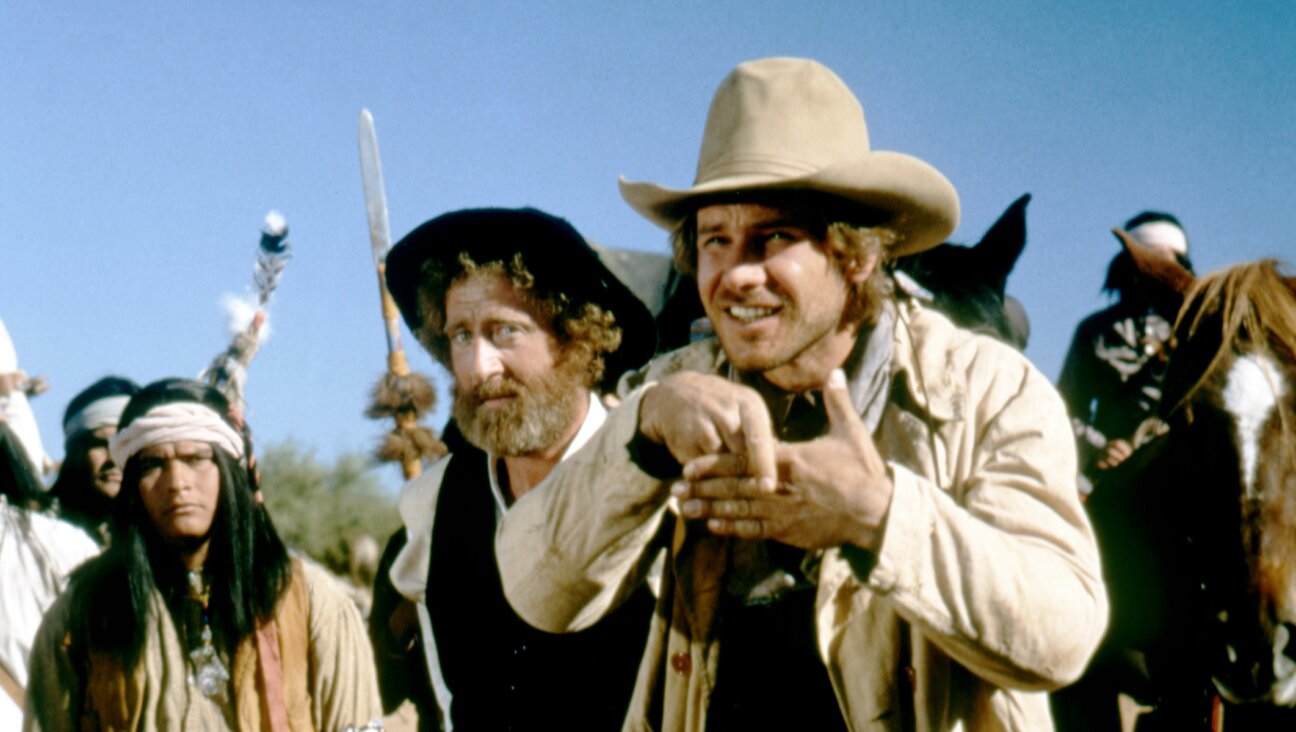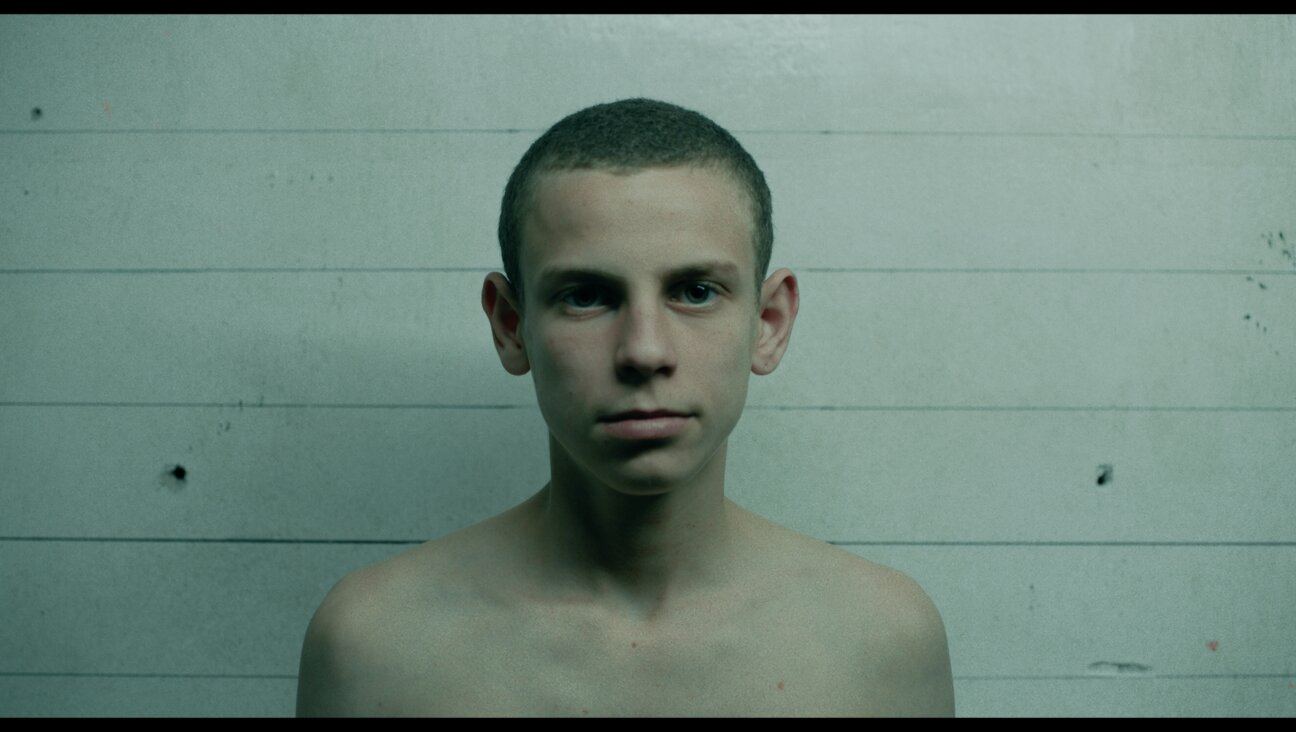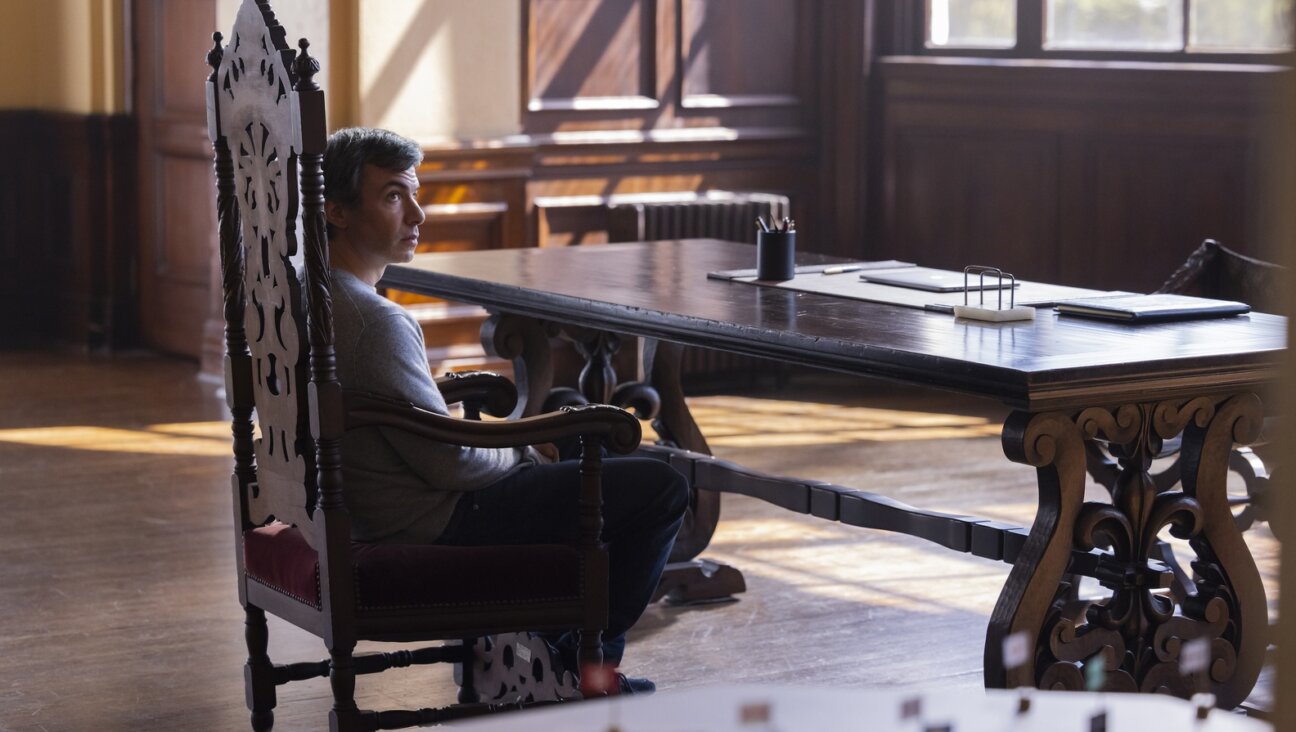Why Lincoln Center’s Paul Newman Screening Is A Must-See

Paul Newman Image by Getty Images
When Nicolas Rapold, editor of Film Comment, sits down on Monday February 20 for a Q & A with the director-acting teacher Jack Garfein and the composer David Amram during a program of films called “Newman Directs,” he will be speaking with two 86-year-old men with unusually interesting things to say about the evening’s subject and who themselves are among the most engaging people around. Set free of a clock, these two Jewish veterans of long artistic lives have the storytelling abilities to keep an audience listening to them for days.
The Newman program is part of a series that embraces a wide range of contemporary and classic films, American and foreign, and which is currently running at the Film Society. The series is called Film Comment Selects, reflecting the role of the magazine. A leading venue for film writing, it is linked to the society. The “Newman Directs” program will consist of two films: “On the Harmfulness of Tobacco,” a 25-minute film Newman directed in 1959, and “The Effect of Gamma Rays Man-in-the-Moon Marigolds.”
That Garfein is a Holocaust-survivor who carries with him boundlessly sad memories of family loss and personal survival makes him a witness to history. There are stories he tells that make him very worth talking to in a program that will focus on Paul Newman, including ones that won’t be known to many people who pride themselves on their knowledge of American film history. His stories of others — and about himself — are of special interest to those who care about the history of how Jewish refugees from Adolf Hitler contributed to American culture.
Buried in that Hollywood history is the life of German-Jewish cinematographer Eugen Shuftan, how he won an Oscar for his work on a Paul Newman film and his influence on movie-making in general.
If Rapold puts that name in front of Garfein, he’ll elicit the dramatic story of two creative collaborations. For Garfein worked with Shuftan on his bold film “Something Wild,” newly released on DVD last month by The Criterion Collection, after he brought Shuftan to New York from Europe to work on that film and he ended up getting Shuftan the job of filming “The Hustler,” Newman’s breakout film as an actor.
In “The Hustler,” Newman gathered his powers as an actor into a performance as the small-time pool shark Fast Eddie Felson, but Shuftan’s work infuses the story with a stir of violence that runs through the film like an electric current. The cinematographer — who died in New York in 1977, at the age of 91 — spelled his name Shufftan, with an umlaut, in Germany. Before fleeing the Nazis to France in 1933, he helped to create Fritz Lang’s German Expressionist masterpiece, “Metropolis,” and had worked with Max Ophuls, another refugee who influenced American film-making. In Europe, Shuftan worked with Billy Wilder on “People on Sunday,” the film that made Wilder a director to watch. Shuftan is credited with inventing for Wilder’s film the use of still images that were spliced into the flow of moving ones — the freeze frame. Trained as an optical engineer, he also worked as a sculptor and architect.
A few film writers have described how Shuftan arrived in this country in 1940 and began working in Hollywood. He was denied membership in the cinematographers guild and didn’t receive credit for a lot of what he did. After the war, disappointed by his fate in the United States, he returned to Europe, working mostly in France.
It was Garfein, as he recounted to me as a long aside to our interviews for the story about Newman’s Chekhov-based film, who worked to bring Shuftan back to America to work on “Something Wild.” And it was Garfein who overcome obstacles to obtain the documents Shuftan needed to work in America that second time, more than 10 years after he’d left.
The director’s act of self-interested generosity placed Shuftan squarely into the story of how American culture developed during and after World War II, when many artists from different disciplines came here from foreign shores. That fuller story of those figures and their impact appear in Anthony Heilbut’s “Exiled In Paradise,” a history of Hitler refugee artists and intellectuals in this country. Heilbut writes about Shuftan’s work with Sirk on the 1942 film, Hitler’s Madman, about the assassination of Reinhard Heydrich, a leading architect of the Holocaust.
“Something Wild” and “The Hustler,” both of which appeared in 1961, were being filmed at about the same time. Both use New York their dramatic environment, fulfilling in fresh ways the cliché about how the city becomes a character in certain films. Robert Rossen, the director of “The Hustler,” apparently visited Garfein in the lab in lower Manhattan where Garfein was working with the daily rushes of “Something Wild.” Garfein told me that Newman also came by to look at what was emerging from Schuftan’s camera, and the two men asked if Shuftan could work on their film. He did so and won an Oscar.
Rossen drew on his many hours in New York pool rooms as a young man to craft the story. Jackie Gleason’s short appearance was an engine of menace.
Every shift in Shuftan’s lighting made a moral nuance palpable, projecting Shuftan’s conviction that lighting spaces and settings could define a film’s character in ways that transcended the focus on actors. Shuftan also invented the Shuftan Process, which changed the way many films were made. It used mirrors to change the way actors’ performances could be integrated with miniature sets to create the illusion of large size, small skyscrapers seeming to loom over small figures, for example.
Alfred Hitchcock was one of several leading directors who went on to make use of it.
Over the course of his conversation, Rapold might also go into Garfein’s relationship with Paul Newman. The two worked together on the founding of the Actors Studio’s Los Angeles branch in the late 1960s. But they also shared frustration, including that around a film about the Warsaw Ghetto uprising, which didn’t get made.
Meanwhile, Garfein is one of the few remaining people who got through the concentration camps and can still talk about his experiences. He was a teenager when he was a deported to Auschwitz and even when he arrived in New York after the war. Lately, he watched the rise of Donald Trump through the same eyes that saw Adolf Hitler, and it might be another subject worth asking about.
The subject might seem beyond a Q & A about two Paul Newman films, until one remembers that Newman was a fervent Democrat.
A memoir-cum-acting guide by Garfein, called “Life and Acting” and published in 2010, conveys some of the stories he’s likely to tell in person, including his encounters with Lee J. Cobb and other leading actors from the middle years of the last century. He was also friends with Samuel Beckett.
The evening will also likely benefit from the presence of David Amram, who wrote the score for “On the Harmfulness of Tobacco” and can speak of the era of American cultural life when he performed with leading Jazz figures and also developed connections between poetry and jazz with Allen Ginsberg, Gregory Corso, not to mention his work with Leonard Bernstein. He got to know Paul Newman, as well, and speaks of all these figures from the past as if talking about encounters he had five minutes ago.
“Vibrations,” Amram’s 1968 memoir, offers rich portraits of musicians and writers, including Jack Kerouac. Amram also got to know Paul Newman pretty well, and what he has to say about the actor-director’s passion for the artistic dimensions of theater and film will be new to many in the audience, especially younger people who might not know Newman’s work beyond his most famous films.
The Forward is free to read, but it isn’t free to produce

I hope you appreciated this article. Before you go, I’d like to ask you to please support the Forward.
Now more than ever, American Jews need independent news they can trust, with reporting driven by truth, not ideology. We serve you, not any ideological agenda.
At a time when other newsrooms are closing or cutting back, the Forward has removed its paywall and invested additional resources to report on the ground from Israel and around the U.S. on the impact of the war, rising antisemitism and polarized discourse.
This is a great time to support independent Jewish journalism you rely on. Make a gift today!
— Rachel Fishman Feddersen, Publisher and CEO
Support our mission to tell the Jewish story fully and fairly.
Most Popular
- 1

Fast Forward Ye debuts ‘Heil Hitler’ music video that includes a sample of a Hitler speech
- 2

Opinion It looks like Israel totally underestimated Trump
- 3

Culture Cardinals are Catholic, not Jewish — so why do they all wear yarmulkes?
- 4

Fast Forward Student suspended for ‘F— the Jews’ video defends himself on antisemitic podcast
In Case You Missed It
-

Culture How one Jewish woman fought the Nazis — and helped found a new Italian republic
-

Opinion It looks like Israel totally underestimated Trump
-

Fast Forward Betar ‘almost exclusively triggered’ former student’s detention, judge says
-

Fast Forward ‘Honey, he’s had enough of you’: Trump’s Middle East moves increasingly appear to sideline Israel
-
Shop the Forward Store
100% of profits support our journalism
Republish This Story
Please read before republishing
We’re happy to make this story available to republish for free, unless it originated with JTA, Haaretz or another publication (as indicated on the article) and as long as you follow our guidelines.
You must comply with the following:
- Credit the Forward
- Retain our pixel
- Preserve our canonical link in Google search
- Add a noindex tag in Google search
See our full guidelines for more information, and this guide for detail about canonical URLs.
To republish, copy the HTML by clicking on the yellow button to the right; it includes our tracking pixel, all paragraph styles and hyperlinks, the author byline and credit to the Forward. It does not include images; to avoid copyright violations, you must add them manually, following our guidelines. Please email us at [email protected], subject line “republish,” with any questions or to let us know what stories you’re picking up.















